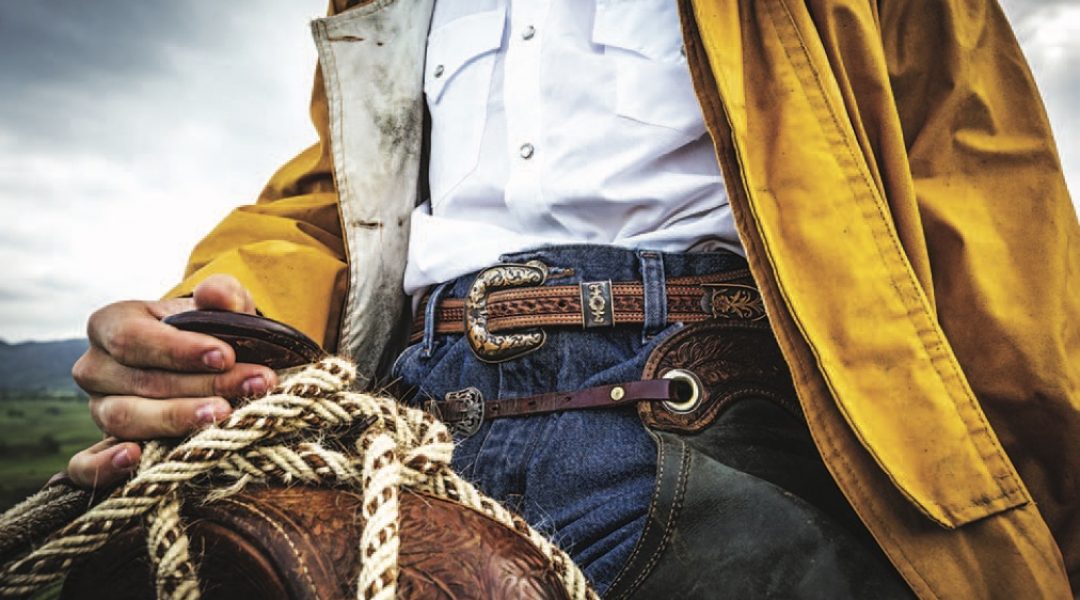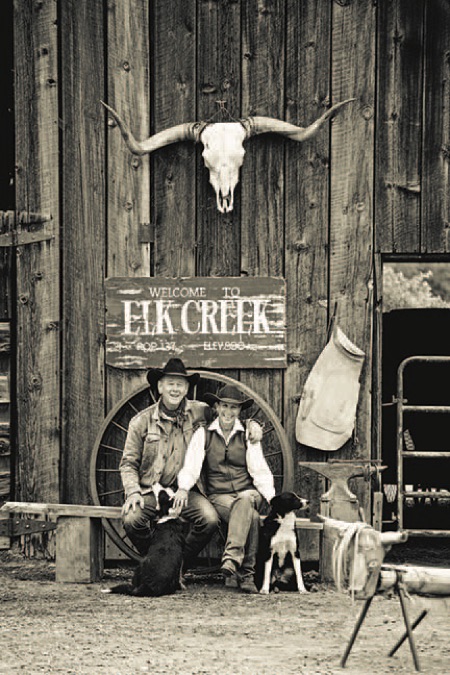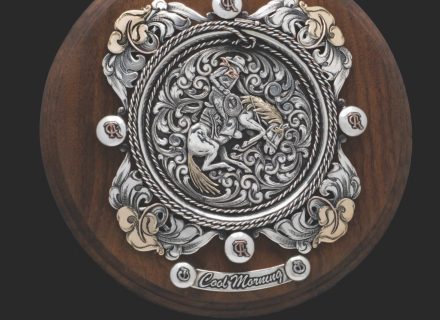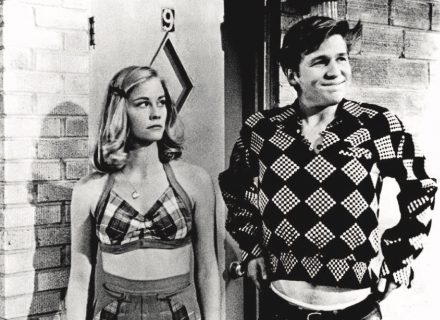As Vogt Silversmiths closes in on 50 years of business, its founders reflect on traditions of family, silver, and the ranching lifestyle.
There are certain professions that are passions — a part of your blood as much as your DNA. These are the livelihoods that get passed down from one generation to the next.
Take ranching. The love of wide-open spaces and making a living off the land has defined many families throughout history. The same can be said for work as a silversmith. One company, Vogt Silversmiths, embraces both.
Founded in 1970 by Norm Vogt and his son Chet, Vogt Silversmiths is a Western buckle and accessories brand that values tradition and a job well done. This year, it celebrates 50 years in business.
Before starting Vogt Silversmiths, Norm Vogt was a California rancher who had served in World War II as a Navy pilot. When he returned home to the San Joaquin Valley, it was to work his ranch and raise his family.
Then, after a vacation to Mexico in the late 1960s, where silversmithing was a pillar of its culture, Norm found inspiration. Seeing the beautiful work and craftsmanship that fathers had been passing down to their sons for generations motivated Norm to get involved and help keep the craft alive for future generations.
Once Norm founded Vogt Silversmiths, there was no doubt it would become a family business.
The company began as a bit and spur wholesaler when Chet was in his mid-20s, but the company quickly incorporated leatherwork, silver saddle accessories, and jewelry. Chet ran the office and handled the design work, while Norm hit the road selling the brand’s wares to Western stores around the country. Chet’s brother Les took over the bit and spur business in the mid-1990s, and Chet focused on continuing to innovate with the company’s products and growing Vogt Silversmiths as a belt buckle and accessories brand.
Now, keeping the family traditions of ranching and silversmithing alive has become a mission of the Vogt family. Their products reflect the longevity of those multigenerational values, which their customers tend to share.
“It’s a matter of what fits an individual’s taste level,” Chet says. “If you want a handcrafted piece and unconditional lifetime guarantees, then you go to something like our product. We have people who have products they’ve worn for 20 to 30 years that are still very useful to them or they pass on to the next generation. Our product is an enduring product, as opposed to something that is worn for a little while and replaced.”
Vogt uses only solid sterling silver and karat gold in its products — and follows time-honored techniques for filing, finish work, and soldering of the silver. In keeping with Norm’s mission to preserve the craftsmanship of authentic Old World silverwork, Vogt Silversmiths employs local craftsmen at their production facilities in Mexico. “That’s where the spirit [of silversmithing] lives,” Chet says, adding that many of the brand’s artisans are third-generation silversmiths. “The level of talent these smiths employ is world class.”
Over the company’s past 50 years in business, what hasn’t changed is the craftsmanship that marks the brand and the art of silverwork, Chet says. Vogt craftsmen still use tools and traditions that have been alive for hundreds of years, making everything by hand. However, Chet says the company intends to stay ahead of the game when it comes to design and engraving styles.
“Vogt’s philosophy is ‘If you are not improving, someone else is,’ ” he says. Vogt has advanced its engraving styles to offer more detail and brighter cuts and is constantly refreshing its selection of designs while still maintaining the tradition, artistry, and Western values the company was founded on.
“For a family business to survive for 50 years is unusual, and it’s meaningful,” Chet says. “How do you then perpetuate that business to continue, because the business world is constantly changing? If you continue to do things exactly the same way all of the time, you will eventually put yourself out of business.”
Despite major accomplishments such as making buckles for several presidents, Vogt has moved through the years with a steadfast approach. “It’s an evolution where you have a lot of small victories as you go, rather than a big change at any one point,” Chet says. “What makes us different is that we are a handcrafted business. ... All of the things are done by hand, so we have to constantly look at what can we do that cannot be done mechanically — done with a machine — so that’s a big difference. When you are in the handcrafting business, you have to stay unique to your work.”
These days, many of Vogt’s products, which consist of intricate and contemporary jewelry, custom buckle creations, and other accessories, are sold through fine retailers and the company’s online platform. Keeping those styles fresh is something customers can expect to continue in the future. “We’re constantly upgrading our designs,” Chet says. “More color in the product, more use of stones, turquoise, onyx, semi-precious stones — that would be one thing that people could look forward to.”
Today, there are new generations involved in the family business, and as it was with Norm, ranching remains at the heart of the company.
Chet and his wife, Angela, regularly work their cattle atop Angela’s prized herd of horses. And a focus on service to the ranching industry is important to Chet, who has served on various boards and committees related to agriculture and conservation. This dedication feeds back naturally into the richness of the Vogt brand.
“There’s an interesting connection being from the land, to interpretation of the product,” Chet says. “I have a different perspective on design and style because we live in the country and we live the life. It just gives a different perspective as to who we are, continuity of the product, continuity of the design, and that’s allowed us to carry through 50 years.”
As the story of Vogt Silversmiths continues to unfold, it’s clear that some things will always stay the same: family, horses, cowboys, and of course, silver.
The story of silversmithing in Mexico is a tumultuous one. Metallurgy, or metal working, began in Mesoamerican culture around 800 A.D., but it was the mining for silver and gold that took center stage in the 1500s during the Spanish conquest. In the years that followed, the art of silversmithing in Mexico went through periods of both decline and resurgence, particularly spanning from its War of Independence in the 1800s through to the 20th century.
Photography: Images courtesy Vogt Silversmiths/Crystal Gibson Photography/David Stoecklein
From our August/September 2020 issue.

























